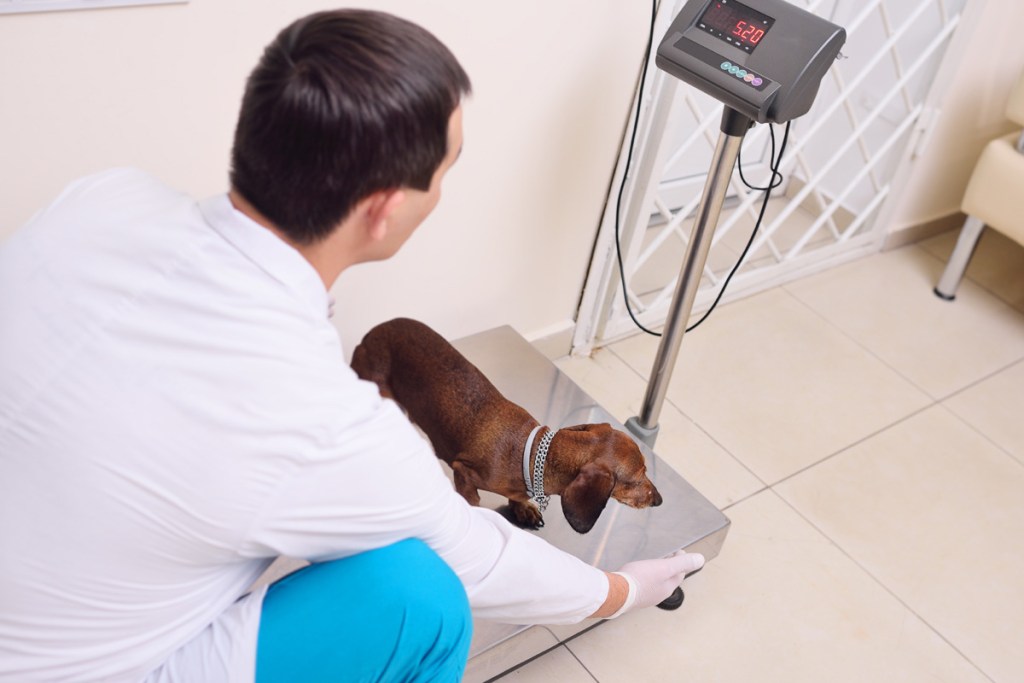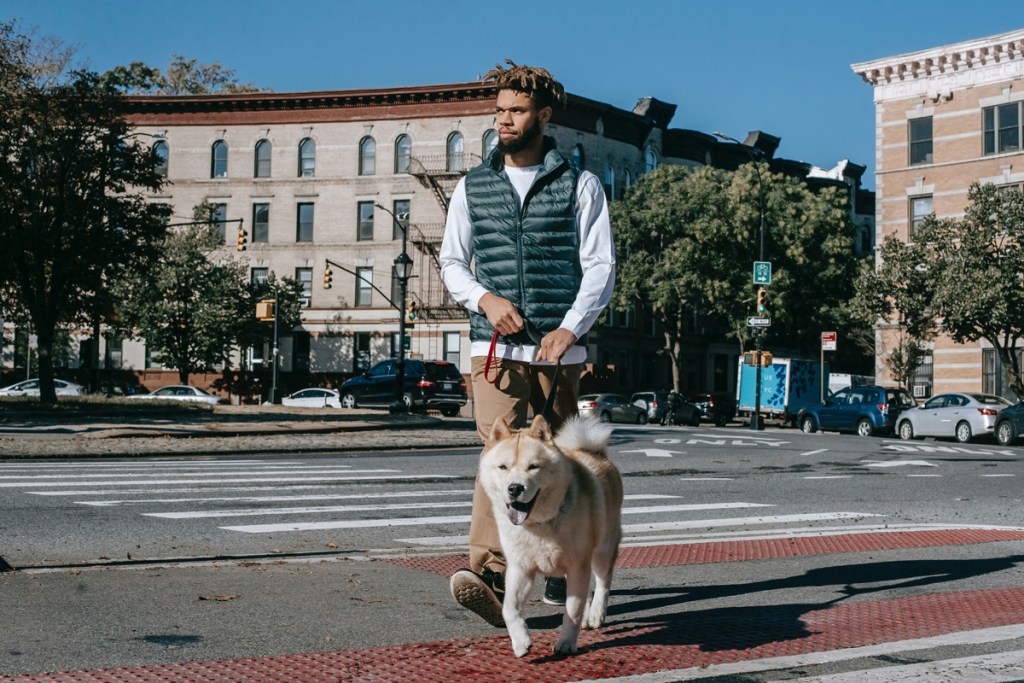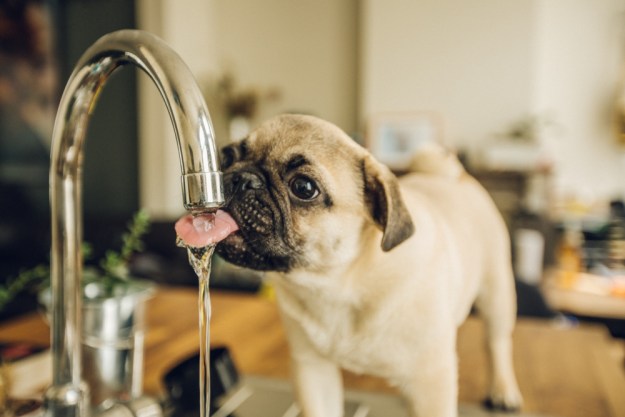If you share your life with a dog who just loves food, it’s hard to ignore those pleading eyes. Many pet parents give in to this begging, which contributes to obesity in dogs. According to the Association for Pet Obesity Prevention (APOP) 2018 Pet Obesity Survey, 55.8% of dogs in the U.S. were overweight or obese. It’s essential that pet parents get obesity under control as it puts their dogs at risk for several health conditions including osteoarthritis, Type 2 diabetes, heart disease, joint injury, and various forms of cancer. National Pet Obesity Awareness Day falls on October 13 and offers a great reminder of the importance of keeping your pet’s weight in check. Following are effective ways to help your obese dog get back in shape.
Consult with a veterinarian before developing a weight-loss plan
According to APOP founder and veterinarian Ernie Ward, pet parents should never put their dogs on a diet without a vet’s assistance. Your veterinarian can confirm that your dog is overweight or obese and check for underlying health conditions associated with weight gain such as hypothyroidism and Cushing’s disease. Once health conditions have been ruled out, your veterinarian can provide a healthy target weight based on your dog’s breed and size. Experts say that a safe weight-loss goal for most dogs is 3% to 5% of body weight per month.

Count the calories
If you want to succeed at helping your dog lose weight, you must have a daily calorie limit and stay under that number, writes veterinarian Sarah Wooten in a PetMD article. Calorie count matters especially with small dogs, when even an extra kibble or two every day will add up to unhealthy weight, according to Wooten. The Pet Nutrition Alliance offers an online calorie calculator, but it’s best to partner with your veterinarian in determining the daily calorie intake to help your dog safely lose weight.
Change your dog’s food
If you’re faithfully measuring out your pet’s food and treats and have increased her exercise and she’s still not losing weight on a regular maintenance diet, then it’s time to discuss a specialized food with your veterinarian. According to Wooten, Hill’s Prescription Diet metabolic weight-management dog food has been a miracle product for many dogs who have trouble losing weight. Specialized diets contain ingredients that help ramp up fat burning while still delivering complete and balanced nutrition.
Keep people food off-limits
To get your dog’s weight under control, you have to stop giving in to the begging or allowing your dog to eat from plates after meals. Wooten cautions pet parents that many dogs put on “sneaky calories” by letting their pooches lick dishes at the table or from the dishwasher. To keep your dog from begging at the table:
- Feed her in a separate room just before you sit down to eat so she’s focused on her food.
- Use a gate to keep your dog out of the dining room during mealtimes.
- If your dog does have access to the dining room, teach her a “go to your place” command. That place could be her bed or crate positioned away from the table.
- Provide a chew bone such as Nylabone to keep her busy while the family eats.
Feed only healthy treats
Experts at the ASPCA say that some commercially produced pet treats are deceptively high in calories. To avoid derailing your weight-loss program, feed safe and healthy fruits and vegetables such as green beans, baby carrots, or apples without the core and seeds. Not all common household fruits are safe for dogs — grapes and raisins, for one, are toxic. You can learn which foods are toxic to pets at the ASPCA Animal Poison Control Center.
Walk your dog for weight loss
It’s important to have a conversation with your veterinarian before beginning any new exercise program, writes Ward in his article “Walking the Dog: Tips for Getting the Most Out of Exercising Your Pooch,” published on the APOP website. Ward recommends using a comfortable harness or head halter over collars and choke chains when walking your dog for weight loss. Also, using a 4-foot leash will keep your dog close as you maintain a steady pace. And don’t forget to bring water if your workout will be longer than 30 minutes. Ward’s article offers a great exercise schedule showing how to build on the length and intensity of the weekly walks.

Conduct monthly weight checks
As you work to get your dog back in shape, it’s important to have your veterinarian do monthly weigh-ins. Since your dog will be spending more time walking, it’s a good idea to have a technician check your dog’s pads for any injuries or problems and to confirm that her nails are a healthy length. Once your dog reaches the target weight, consider putting her on the scales every three months to ensure the pounds aren’t sneaking back on.
Veterinary experts say that for most dogs, the secret to weight loss is a dedicated, committed, and concerned family. Food hounds will keep eating as long as they have access to food, so it’s up to pet parents to control the calories. The hard work will pay off when you have many more happy and healthy years with your beloved pup.
Editors' Recommendations
- Are ‘dog years’ really 7 human years? How to calculate your dog’s age
- Why does my dog have a bald patch on their tail? Here are the answers you need
- Looking for signs your dog has ticks? These telltale symptoms mean you have a flea or tick problem
- Is your dog barking nonstop? Here’s how to get your noisy pup under control
- Do puppies sleep a lot? These are the perfectly normal sleeping habits of a healthy pup




